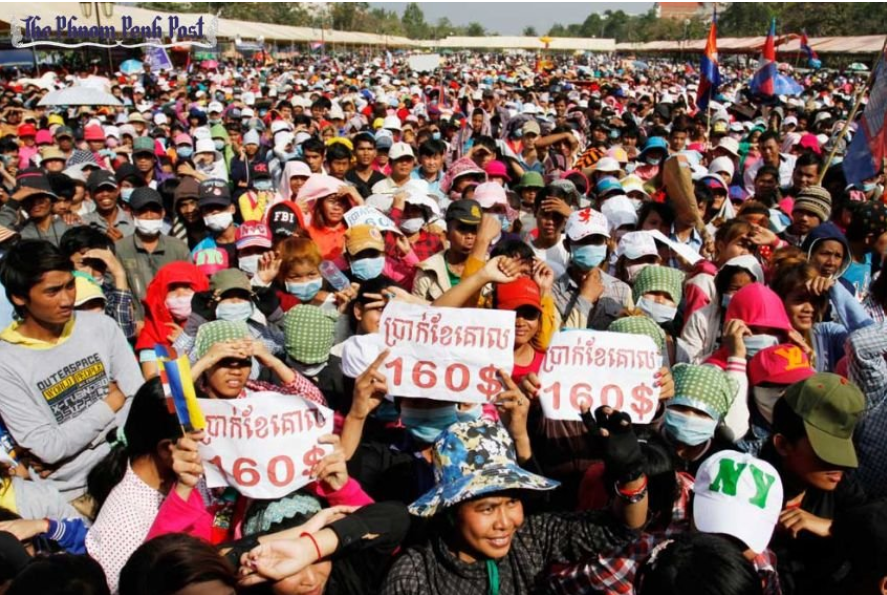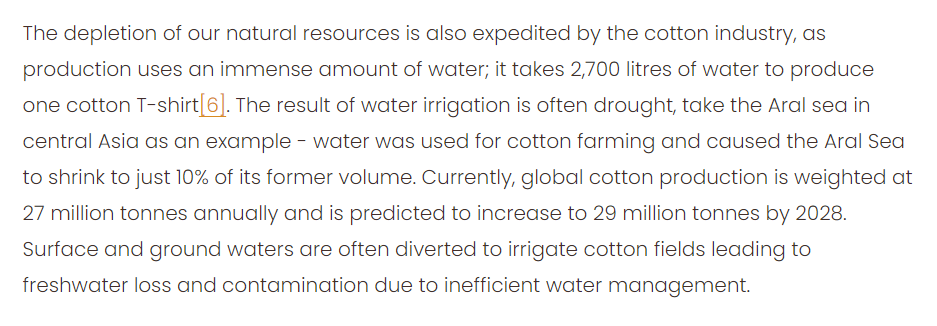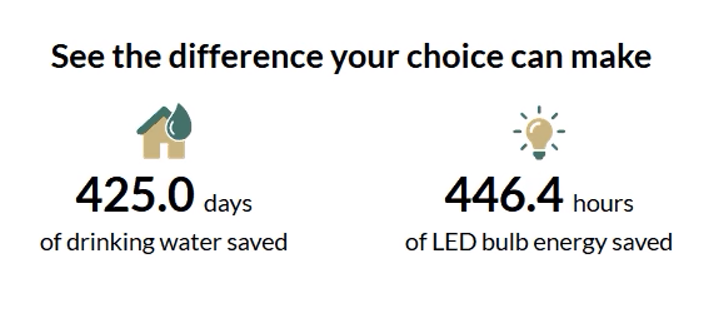Your tee-shirt’s bloody trail. Explained.
Delighted about the latest cotton t-shirt you bought?
Here are three snippets of the t-shirt’s origin:
- The cotton industry employed 106.2 million children in 2021.

- A kilogram of textiles needs up to 100 litres of water.
- The colouring and finishing measures of the cotton industry are responsible for up to 20% of all modern water contamination.
Are you feeling as enthusiastic as before? No, right. The cotton industry poses huge downsides to the workers responsible for producing cotton. However, most of their cries go unheard.
We’re here to change that. We would propose an alternative to cotton that’s:
- More sustainable
- Uses far less water
- Thinks of the welfare of the workers and offers better benefits
In the next seven minutes, learn all about the pitfalls of the cotton industry and the alternative you need.
By the time you finish reading this article, you’ll have a far better understanding of the adverse social effects of the cotton industry and which alternative would be a better choice for society.
Note: the information is true at the time of writing. That’s October 2022.
Pitfalls of the cotton industry and the alternative you need – a complete guide
Pitfalls
Low wages and working conditions
90% of cotton workers come from low-income countries. It’s a good thing they’re getting employed, right? Not so much. Here’s an example.
2014. Over 300,000 workers from around 500 garment factories including those of Gap and Adidas went on strike in Cambodia. Their demands? Increasing their monthly minimum wage to $160 per month. However, the companies only made the minimum wage $95 per month.
The riots went on for several months. The police killed 4 workers and sent 23 for time in prison.

The above-mentioned incident should tell you a lot about the cotton workers. The scenario hasn’t changed much in later years. For example, cotton workers in India work for less than $5 a day.
Furthermore, the workers work up to 16 hours a day, seven days a week. The workers are forced to breathe the harmful pesticides and insecticides used in farming, colouring, and finishing measures.
The aforementioned situations lead to health issues such as:
- Asthma
- Chronic bronchitis
- Skin infections.
Furthermore, in a worst-case scenario, the worker might be forced to leave the job due to illness, which results in them plunging into poverty as well.
Heavy water consumption and pollution
Why is cotton bad for the environment? One of the reasons is, cotton is one of the ‘thirstiest’ plants around.

The Stockholm Environment Institute found out in a study that it takes 10,000 litres of water to produce 1 kg of cotton; the equivalent of a single t-shirt.
Furthermore, cotton plants draw moisture from the earth and deplete the limited freshwater sources we have. Over-cultivation of cotton has resulted in desertification in many countries that rely heavily on cotton as an export product. The Aral sea has shrunk by 10% of its former volume as the water of the sea is used for cotton farming.

Imagine the impact of using such humongous amounts of water when people are struggling to get enough drinking water for themselves.
Furthermore, the pesticides used in cotton production – farmers must use a lot of them – end up in the nearby water sources, contaminating the water and posing a threat to the nearby communities who use the water.
Heavy usage of herbicides and insecticides
Cotton plants need extensive usage of herbicides and pesticides to grow. The cotton industry uses 6% of the entire world’s use of pesticides and 16% of the entire world’s use of insecticides.

These herbicides and pesticides wash off through the irrigation channels to the nearest river and other water sources. Thus, the communities living beside these water sources – who are often forced to drink the water from these sources – get affected by the polluted water.
Furthermore, a plethora of leading genetically modifying crop companies modify their crops to suit only their own pesticides. The trickery affects the farmers in three ways:
- The farmers are in constant touch with agrochemicals, leading to various health problems including blisters, diarrhoea, and even death.
- The pesticides that are not produced by the same company don’t work on the crops. Thus, farmers are forced to buy pesticides from the same company even if the prices are lower elsewhere. Furthermore, even the specific pesticide becomes non-effective after a certain period of time, causing the farmers to buy more quantities of the pesticide. These events drive farmers into a vicious cycle resulting in their extreme poverties.
- The excessive use of herbicides and insecticides destroys the natural biodiversity present in the soil. Thus, the soil gets stripped of its natural nutrients and becomes infertile for farming. The result? The farmers lose their precious land without any means of getting the land back.
Pollution from colouring and finishing measures
The World Bank confirmed colouring and finishing measures in the cotton industry cause up to 20% of all modern water pollution. Furthermore, water bodies that are situated nearby colouring measures contain 72 distinctive poisonous synthetics.
The World Bank found 30 distinct mixes that are refractory in nature and difficult to remove from water. Furthermore, the colouring dyes contain elements that are detrimental to water quality such as:
- Naphthol
- Sulphur
- Nitrates
- Acidic corrosive
- Tank colours
- Chromium compounds
- Weighty metals such as nickel, cobalt, arsenic, copper, cadmium, mercury, and lead
- Cleansers
Thus, if you’re wondering what are the major problems of the cotton industry, pollution from colouring and finishing measures is one of them.
The alternative
By now you’re wondering, fine, the cotton industry poses a massive threat. The positive impacts of cotton production aren’t enough to cover up for the negative ones. But what’s the alternative to cotton fabric?
Hemp can be a fine alternative. Let’s check out how hemp solves the issues the cotton industry poses to the workers responsible for production.

Better working conditions
Companies such as the Hemp Foundation strive towards creating a better work environment for workers.
The Foundation has farms and processing units placed throughout Uttarakhand. The state has seen its male population migrating for work, leaving behind ghost villages. Hemp Foundation is changing the scenario by cultivating hemp which grows naturally in the district.
Here’s what the foundation does:
- Employs cluster development approach to introduce commercial hemp cultivation in the region. The process helps reclaim barren lands.
- Empowering women workers through mobilizing women-focused self-help groups (SHG). The self-help groups create a safe space for women and offer them the marketing skills necessary to survive in the global hemp market.
- Launches training programs to teach the farmers the modern techniques of commercial hemp production blended with traditional techniques of organic farming. Furthermore, the training programs teach the production processes of different hemp-based items and ways to link the products to the global hemp market.
Furthermore, the foundation is working on raising awareness regarding hemp, researching germplasm, and promoting sustainable living, among other projects.
Less water consumption
Hemp requires significantly less amount of water than cotton.
It takes 2,123 litres of water to produce a kg of hemp fibre. Thus, for every 20 litres of water cotton needs to grow, hemp needs five litres.
Furthermore, the plant becomes resistant to drought after the plants are a few weeks old. Hemp plants never draw away moisture from the soil. Thus, the limited freshwater sources remain intact.

Less usage of herbicides and insecticides
Hemp doesn’t need heavy amounts of herbicides, insecticides, or fertilizers. Thus, producing hemp doesn’t give rise to chemical run-offs being washed away through the irrigation channels to pollute the nearby water sources.

Hemp plants draw away harmful pollutants such as mercury and zinc from the soil; thereby reducing pollution even more.
Hemp plants grow tall and leafy. When the plants are planted closely together, the plants form a dense leaf canopy, blocking out the sun. The process eradicates weeds completely. Thus, the farmers don’t need to use toxic weed killers and herbicides.
With the lower usage of fertilizers, herbicides, and insecticides, hemp plantations are a heaven for pollinators such as bees and small animals and birds.
The leaves and hurds of hemp plants can be used in the soil as organic fertilizer. Hemp plants have a deep root system that enhances the aeration of the soil.
Pitfalls of the cotton industry and the alternative you need – choose Hemp to save the workers
The cotton industry employs 7% of all labours in developing countries.

However, with the horrible working conditions, low daily wages, and the massive usage of water on a planet with water scarcity, the negative impacts of cotton production far outweigh the benefits.
Now that you know the pitfalls of the cotton industry and the alternative you need, we hope the knowledge will help you make responsible decisions that help sustain the livelihoods of your fellow human beings.
Sources:
https://thisladyblogs.com/a-sustainable-future-with-hemp-reasons-you-can-relate-with/
https://www.downtoearth.org.in/blog/water/the-dark-side-of-colourful-textiles-76505
https://ejfoundation.org/news-media/the-casualties-of-cotton
https://blog.signature-products.com/hemp-vs-cotton/
https://textilevaluechain.in/in-depth-analysis/working-conditions-in-the-textile-industry/
https://www.votehemp.com/wp-content/uploads/2018/09/hempinfo.pdf
https://www.blueskyhempventures.com/blue-sky-thinking/organic-vs-natural-hemp/


